Trekking the classic Inca Trail to Machu Picchu is a bucket list experience for many people, myself included. I wanted to make sure I was tip-top shape to make the four-day trek at altitude and had all necessities.
Before I get into the “how,” a few notes for context:
- We visited Peru in the very beginning of September, which is early spring in the country. Peru is just under the equator. September is a slightly less popular month to complete the trek and technically the beginning of rainy season. We got lucky and had perfect weather the entire trek. Visiting at this time of year meant that we didn’t have to consider getting too cold or too wet during our trek.
- We trekked with a local tour company that included a guide and porters. Though it is technically possible to hike the classic Inca Trail with only a hired guide, it is not recommended. Trekking with porters meant we did not have to pack tents, food for meals or cooking equipment. We carried backpacks with what we might need on the trail, including extra layers of clothes, chargers, snacks and bottles of water. We also carried some extra clothes and items to stay within the limits of the weight porters can carry.
- Although we could have left extra luggage at the hotel, we decided we only wanted to pack what would fit in our backpacks we would carry on the trail. What we brought included clothes for the days spent in Cusco before the trek and Lima afterwards.
Preparing for the Inca Trail:
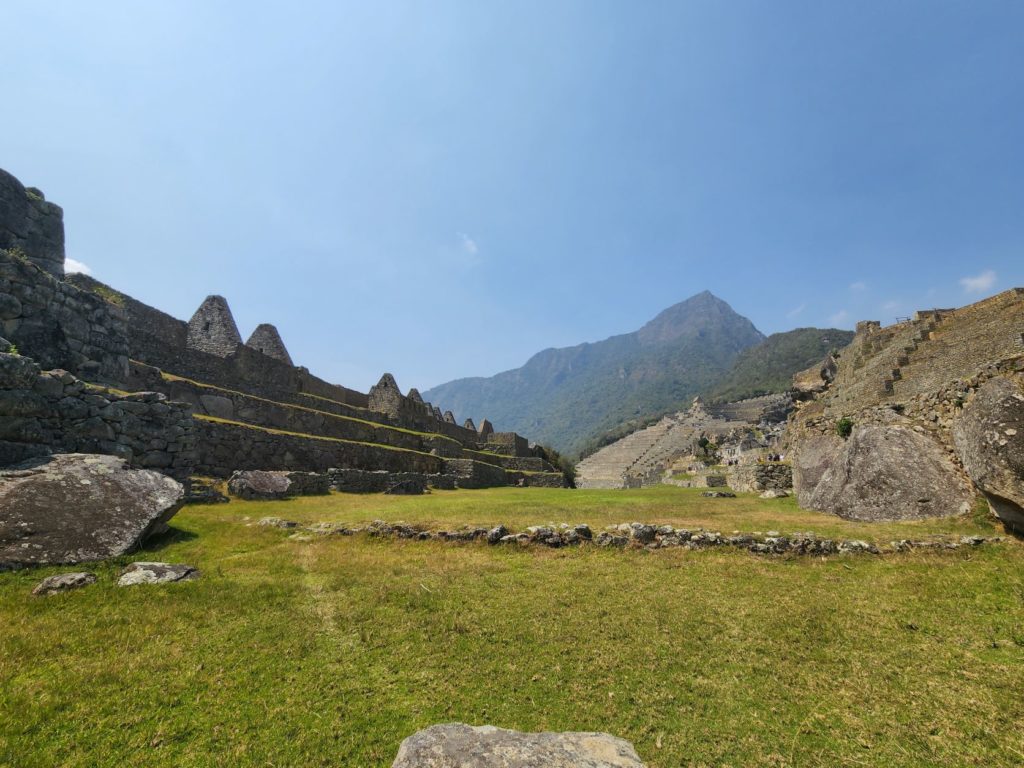
Selecting a Trekking Company:
There are countless trekking companies in Cusco. It’s easy to feel overwhelmed by the choices. It may be tempting to book the cheapest tour company, but there are a few considerations other than price.
Local Employment: Tourism provides a lot of much-needed jobs to the people of Peru, especially in the Cusco region. Depending on where the tour company for the Inca Trail trek originated, they may or may not hire employees local to the Cusco region. If they are headquartered in Lima or outside Peru, they may not use local employment. Cusco-specific companies are more likely to employ the local community.
Trail Difficulty: All companies follow the same Inca Trail, of course, but they may differ in how they decide to tackle different sections. Some companies aim to cover more ground in the first couple of days than others. They also may take the steeper parts more quickly than others. Make sure to select a company that aligns with your fitness level.
Fitness:
Most people just need a basic level of fitness for the Inca Trail. Our guide from SAS said he had a 100% success rate of getting trekkers through the Inca Trail over the past nine years, regardless of their fitness.
With that said, I’d read online about people who hadn’t been able to make it through the trail, or had to wake up earlier than normal to make sure they made it through the entire day. The Inca Trail trek is not technically difficult, but the altitude can make it more difficult to get through, especially during the steeper climbs.
The most important thing for the Inca Trail is to ensure you have strong cardio fitness. To prepare, I focused on weighted high-intensity interval training (HIIT) three times per week, running two to three times per week and yoga once per week. The HIIT training was for cardio and muscle strength, and the yoga was to stay flexible and recover from the workouts.
Though I lived at sea level and didn’t specifically train for altitude, I believe focusing on cardio fitness did help.
Adjusting to Altitude:
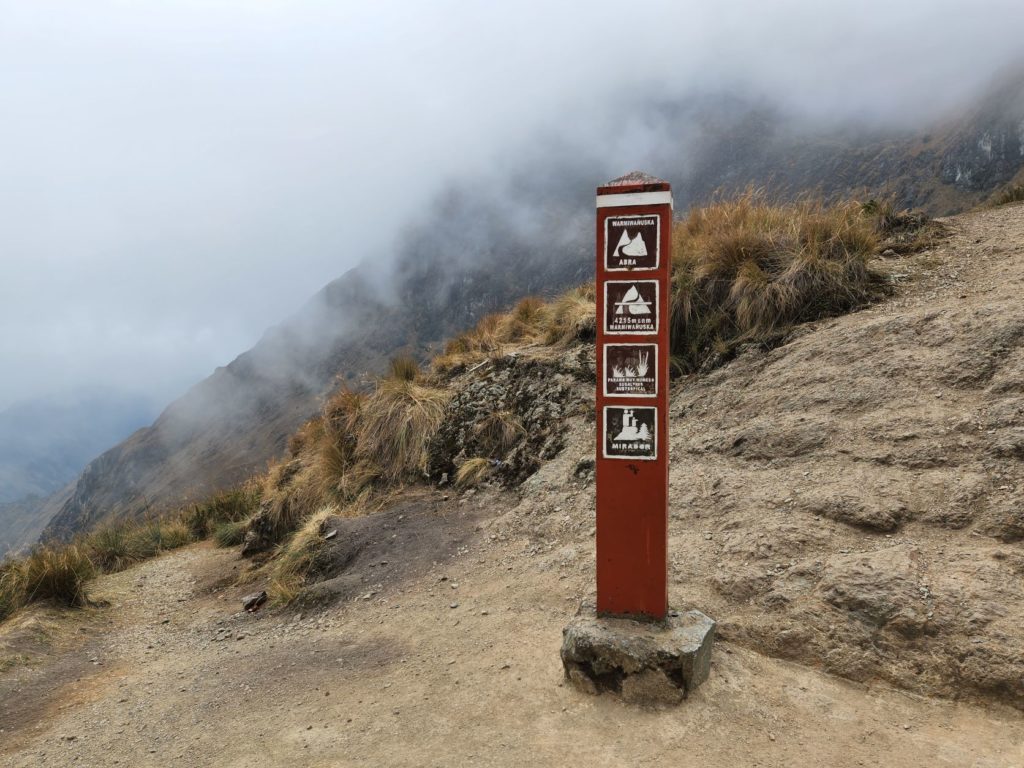
Because we were coming from basically sea level and unable to train for higher altitude, we wanted to give ourselves time to adjust to elevation. Cusco sits at just over 11,000 feet of elevation, Machu Picchu is just under 8,000 feet, and the highest point on the Inca Trail is at nearly 14,000 feet.
It is highly recommended to spend at least two days in Cusco before even visiting Machu Picchu, let alone attempting the Inca Trail to adjust to the higher elevation, especially if you’re coming from altitude. If possible, you should spend the first day taking it easy while you adjust, and then the second day being more active (walking around the city, going on a short hike, etc.). We spent about two and a half days in Cusco doing just that.
Coca leaves also help with altitude. You can chew the leaves or drink tea made from them. A lot of hotels provide coca tea to guests, and ours was no different. We had coca tea for breakfast and after lunch every day.
Our hotel also had oxygen assistance on hand, just in case, though we never had to use it. I don’t know how typical this is for other hotels in Cusco.
Packing for the Inca Trail
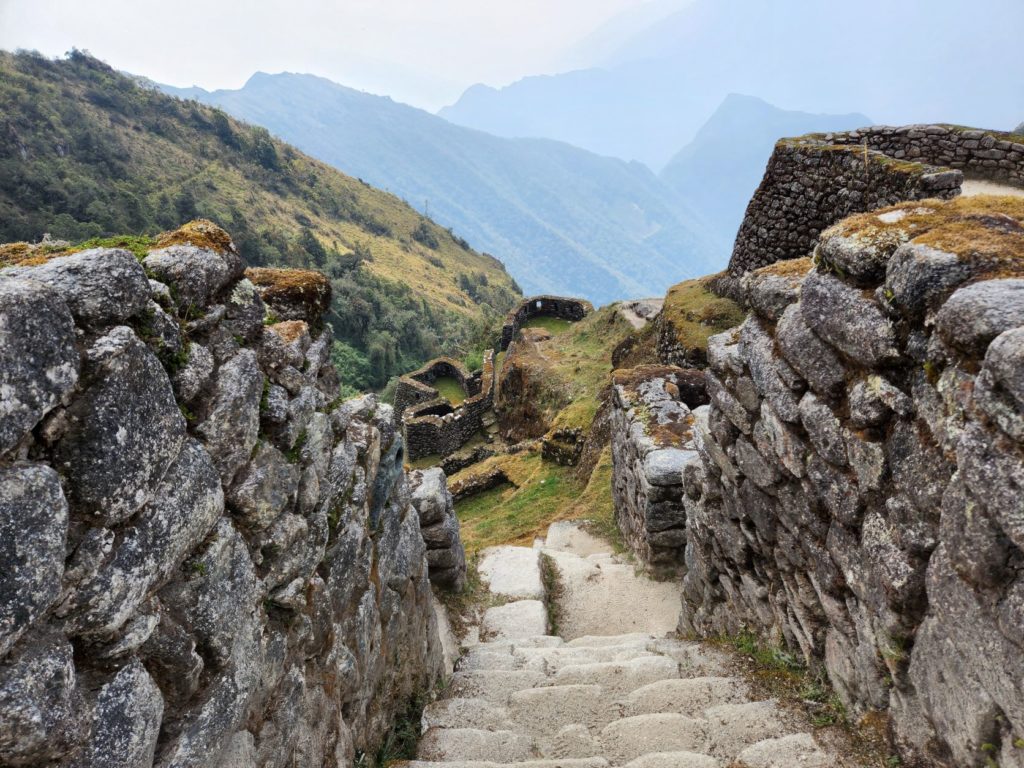
September is technically early spring for Peru, and the weather was still pretty cool in general, especially on the trail. We needed to be prepared to stay warm while hiking and at night. It was also technically the rainy season, and weather can be unpredictable in general on the trail. Though we got incredibly lucky with perfect weather the entire time on the trail, we needed to be prepared for anything.
The trekking company took care of all our campaign needs – tent, sleeping bag, meals, basic mattress layer. We also upgraded to a more comfortable mattress layer that would help give us a better night’s sleep and raise us up off the ground an extra inch in case it rained.
So what did we bring for the Inca Trail, and what should you pack?
Here is a packing list:
- For hiking:
- Two pairs of exercise/hiking pants (I prefer pants with pockets rather than simple leggings).
- One outer layer of hiking pants (for additional warmth)
- One pair of hiking shorts (in case it warms up enough)
- Four exercise/hiking shirts (changing shirts each day helped me feel fresh – increase it to five shirts if also hiking Huayna Picchu an additional day)
- Two light long-sleeved layers
- One heavier jacket
- Hiking boots
- One rain jacket
- One rain poncho (to help also cover the backpack if it rained)
- One hat for sun
- One hat for warmth
- For relaxing/sleeping:
- One pair of leggings
- One long sleeved shirt
- Wool/slipper socks
- One pair of slip-on shoes (so you don’t have to put your hiking shoes back on to use the bathroom)
- Something to pass the time at night: A pen and notebook, a sketchbook, reading book or kindle, a deck of cards
- Other:
- Baby wipes (we took one large pack to share for two people, but wished we’d had more – I would recommend one pack per person)
- Toilet paper/tissues
- Ibuprofen
- Neosporin
- Hand sanitizer
- Sun screen
- Bug spray
- Head lamp
- Water bottles that can hold about two liters of water per person
- Battery pack with plenty of charge for multiple days + charging cable (I recommend putting your phone on battery saver and airplane mode to preserve battery as much as possible on the trail, but you’ll still probably want a battery pack to ensure you don’t run out of the ability to take photos on your phone)
Backpacks:
I brought one 28-liter Patagonia backpack on the trek, which served me well. I actually packed everything I needed for the trip in the backpack, including three additional outfits, another pair of shoes and a bathing suit. The day before we started the trek, the tour company gave us duffel bags, which we were told we could fill with an additional four kilograms of items. I put my additional clothing in the duffel and kept most of my trekking clothes in my backpack.
That was how I prepared and packed for the Inca Trail. Have you ever done a multi-day trek? Is there anything missing you would recommend?

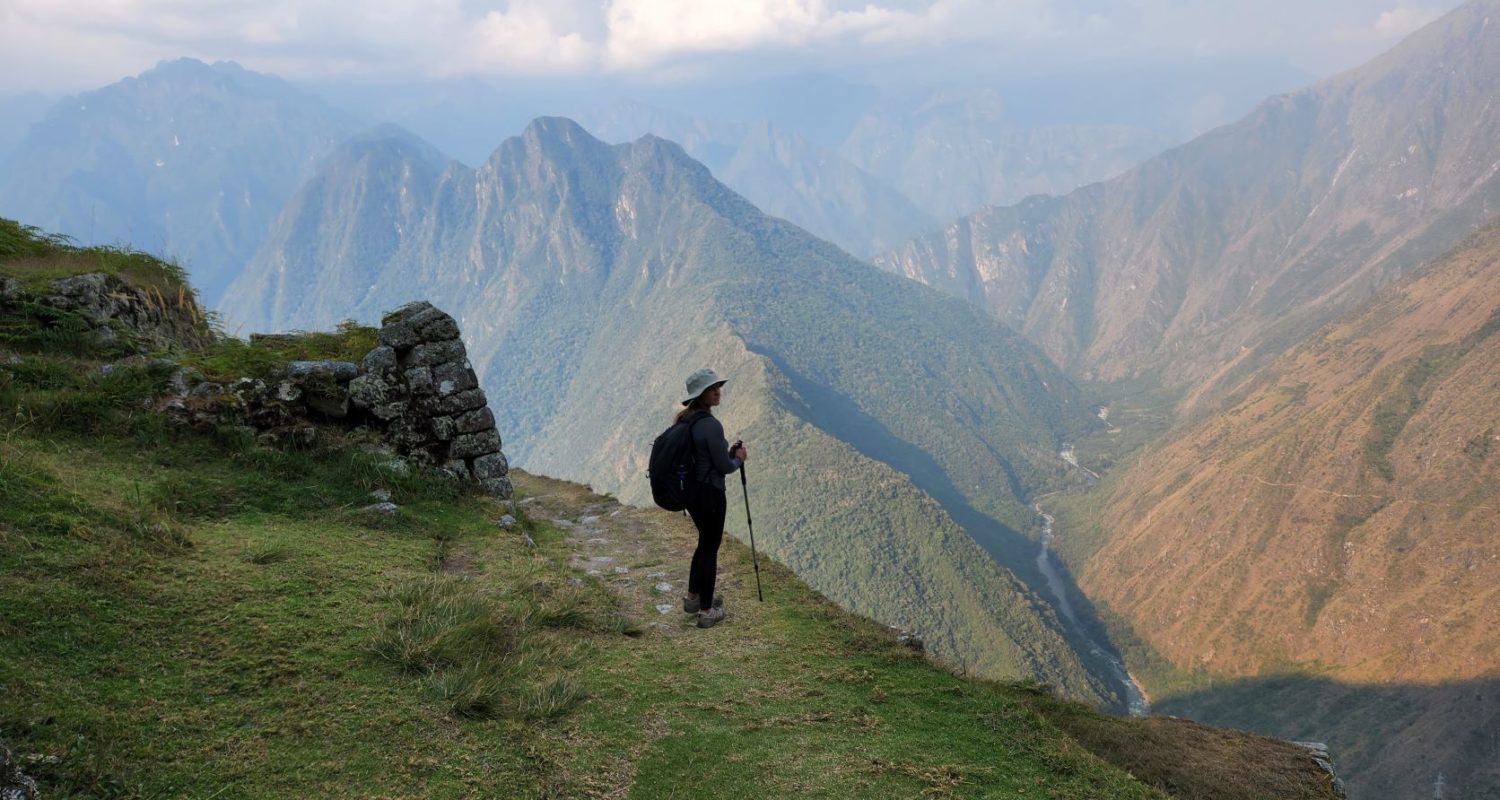
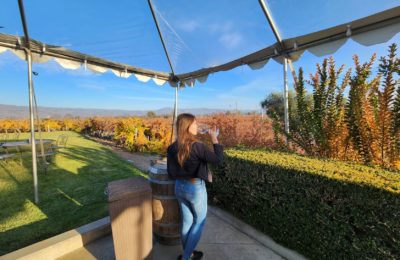
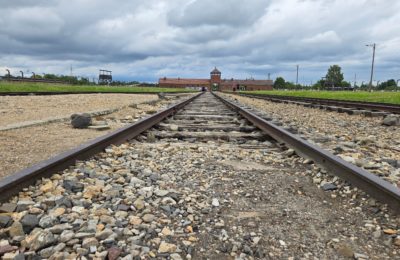
2 thoughts on “How to Pack and Prepare for the Classic Inca Trail to Machu Picchu”